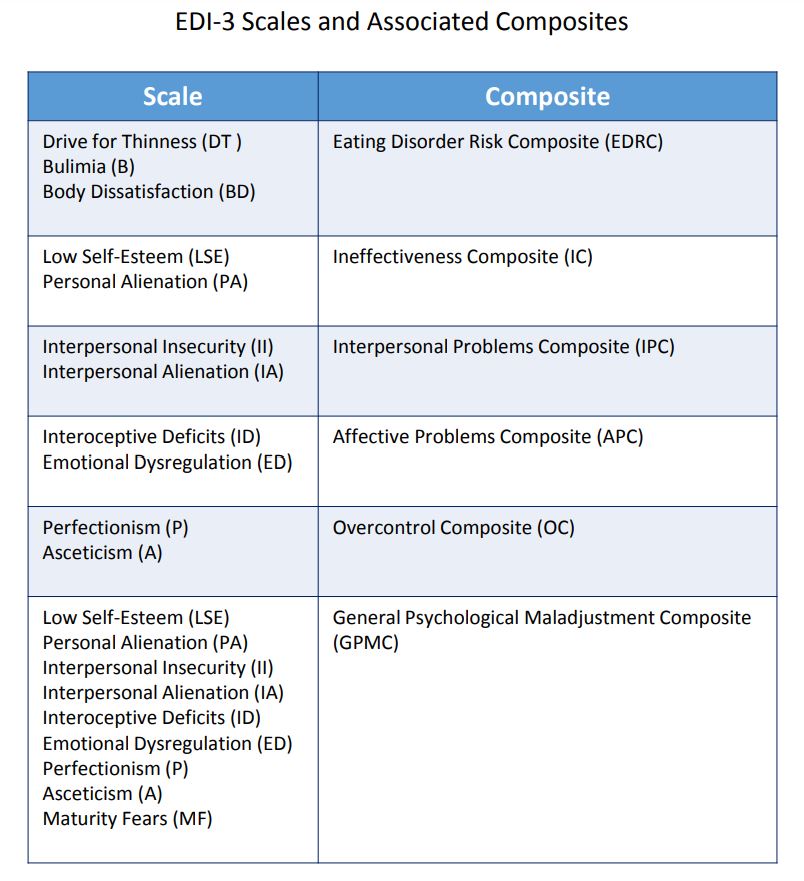Register now and start:
- Accessing PAR Training
- Shopping PAR products & tools
- Using online assessments with PARiConnect
A revision of one of the most widely used self-report measures of constructs shown to be clinically relevant in individuals with eating disorders, the EDI-3 includes enhancements that make the instrument more consistent with the psychological domains identified by modern theories to be most relevant.
Need to quickly screen? The EDI-3 Referral Form is an abbreviated version of the EDI-3 that quickly screens individuals for eating disorder risk.
The EDI-3 materials, including the manual, have been translated into European Spanish and designed especially for Spanish-speaking clinicians and their clients. Normative data were collected primarily in Spain, with additional data collected in some Latin American countries. Certain test items and stimuli in this translation vary from the English version because of cultural and linguistic differences between the countries and their language. Order the EDI-3 in Spanish.
